10 Machine Embroidery Mistakes and How to Avoid Them
This site contains affiliate links to products. We may receive a commission for purchases made through these links.
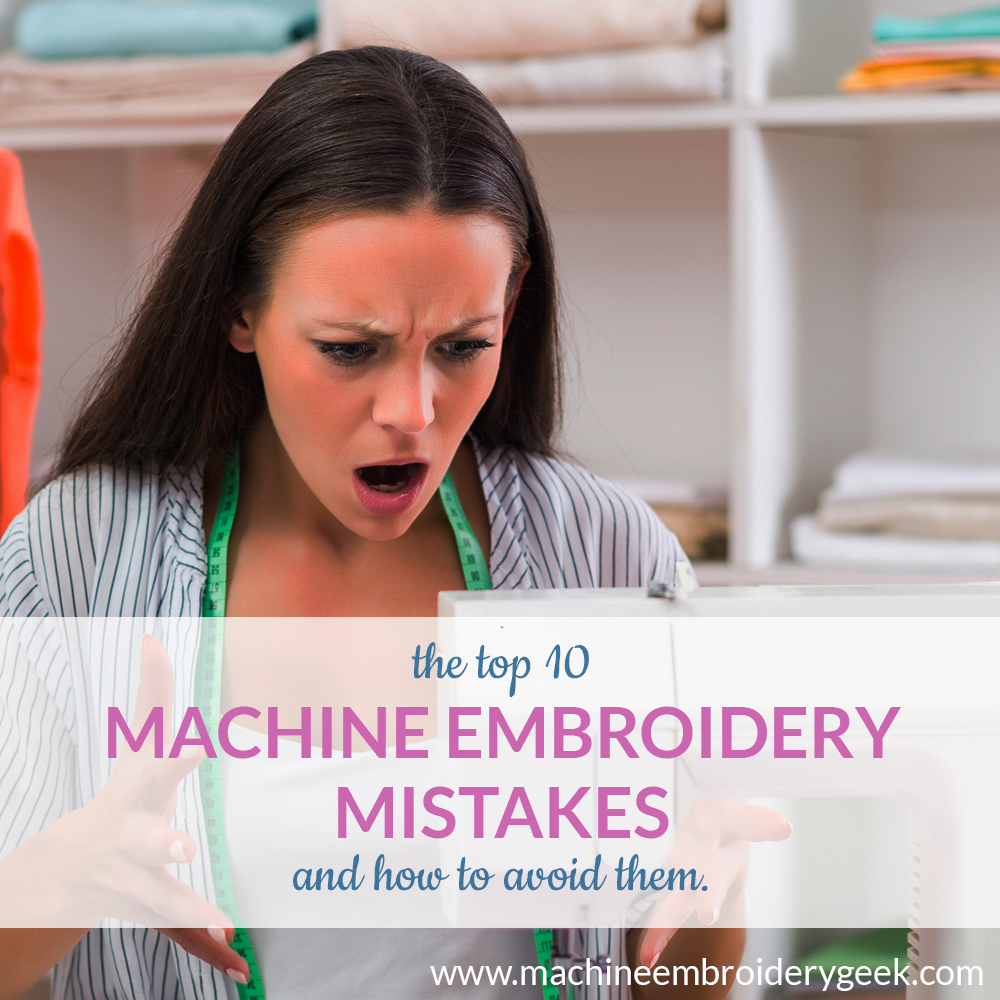
When you’ve spent over 10 years working with an embroidery machine, you’re bound to make a few embroidery mistakes. This is certainly true for me. The funny thing is – the more I share stories with other machine embroidery geeks, the more I hear the same stories again and again. It seems we’ve all made the same dumb embroidery mistakes.
Yes, I know, embroidery mistakes are an inevitable part of the learning process. But if you are just starting out – wouldn’t it be helpful to know what some of them are so that maybe you can make a few less?
So here you are – my top 10 embroidery mistakes and how to avoid them. I hope this helps you in your learning, or at least confirms that you are not alone. We’ve all done one of these dumb things.
Embroidery mistake 1: walking away from your embroidery machine
Don’t walk away from the machine while it is stitching out a design. One tough lesson I’ve learned is that as soon as I walk away from my embroidery machine is the moment that all hell breaks lose.
In my first embroidery class, I actually asked my embroidery instructor if it was cool for me to walk away from the machine while it was stitching and she said… “Sure, if you want.”
This, however, was TERRIBLE advice. After walking away from my machine one too many times while it was running and having something disastrous happen. I would like to revise that answer to an emphatic “no.” It is not a good idea to walk away from your embroidery machine.
When you are close by and can either hear or see that something is not right, STOP THE EMBROIDERY MACHINE. I have rescued quite a few projects when the machine was getting hung up because I ran over and turned off the machine, cleared the problem and got started again. Multi-task if you must (iron, trim thread, organize your notions drawer…) Do what you must to avoid falling asleep at the machine, but do not walk away.
Embroidery mistake 2: trying to hoop everything
One of the first projects I attempted on my embroidery machine was monogramming towels. Not knowing any better, I tried hooping the towels. I must have tried 100 times to get the towel aligned properly in the hoop and not have it pop out. It was rough, but I assumed I would get better at it in time.
When my more experienced sister saw what I was doing, she laughed at me – amazed that I would actually attempt to hoop a towel. But what other choice did I have???
This is when I learned to float towels (and just about everything else) in the hoop. You simply hoop the stabilizer than stick the towel on top. You can either use temporary spray adhesive to get the towel to stick to the stabilizer or use sticky back stabilizer. So much quicker and easier.
Embroidery mistake 3: not using stabilizer or using the wrong kind.
The only time you should embroider without stabilizer is: NEVER. Stabilizer is needed to keep your garment/fabric/towel, etc… in place while you are embroidering.
There are many different types of stabilizer, but two major categories are cut away and tear away. In general, “if you wear it, don’t tear it.” Cut away stabilizer should be used on the back of anything worn, especially if it’s stretchy, i.e. sweatshirts, t-shirts, etc. Tear away is better for heavy duty projects like embroidering on towels. Learn more about stabilizer for machine embroidery.
Water soluble stabilizer is stabilizer that melts away when it comes into contact with water. It’s used for many in-the-hoop projects, making patches and free standing lace.
It addition to using the right type of stabilizer, it’s also important to make sure the stabilizer is hooped securely. It should be flat and pulled tight, so tight that a coin could bounce off it.
Embroidery mistake 4: using the wrong type of thread
It may be tempting to start using your embroidery machine with whatever thread you have on hand, but you will likely be disappointed with the results. Embroidery thread has a different composition and looks much nicer when stitched out. There are many different types of embroidery thread, and almost every embroidery enthusiast has her favorite brand.
I would suggest not over-investing in one brand before determining if you machine “likes” the brand. Some people swear that certain brands of thread frequently break on a particular machine. I, personally, do not have a strong bias toward a particular brand.
Learn more about thread for machine embroidery.
In addition to using embroidery thread (as opposed to regular thread), it’s also crucial to use embroidery bobbin thread in the bobbing. Embroidery bobbin thread is much thinner than regular thread which helps pull more of the top thread to the back of the garment, ensuring no bobbin thread shows on top. Learn more about bobbin thread for machine embroidery.
Embroidery mistake 5: not test stitching
When you buy a font or a new embroidery design, test stitch it out first on some scrap fabric. The test stitch sample serves multiple purposes: you will get great practice, see what the finished piece will look like, and have a sample to show potential customers in the future.
Having samples is especially handy when it comes to communicating with customers. You can show them the stitched out samples to help them choose a typeface or design. Consider sewing out every font and design you own on white fabric, then write in Sharpie pen the name of it and the sizes you have. Then put the samples in a binder for easy viewing.
Embroidery mistake 6: picking the wrong type of embroidery or appliqué design for the wrong fabric
Be sensitive when it comes to design and fabric selection. Most embroidery and appliqué designs are created with a stitch density set for a standard weight cotton fabric. When you try to stitch these designs on other types of fabric, you may need to make some adjustments, such as adding extra layers of stabilizer. The reality, however, is that some designs are not going to stitch out very well on some fabrics. (think high stitch count designs and delicate fabrics).
Embroidery mistake 7: not trimming jump stitches between each thread color
Yes – I know the new fangled embroidery machines actually trim jump stitches as they are stitching out. Must be nice. My old dinosaur of an embroidery machine does not. So….
If you have an embroidery machine that does not trim jump strings while it is stitching out the design, then you should do it yourself. Even though a well digitized design has minimal jump stitches, they can rarely be avoided altogether, and long jump stitches cause the fabric to pucker. As the design is stitching out, after each thread color is finished stitching, trim it as close to the design as possible.
Embroidery mistake 8: not taking the time to double check everything before starting to stitch
Sometimes I get so excited to start a project that I forget to check a few crucial things, and this can often lead to a disaster or at the minimum, unsatisfying results. To avoid common embroidery mistakes, run through a checklist before starting to stitch, which might include:
- Is the fabric hooped in the right direction? You don’t want to stitch out the design upside down or rotated 90 degrees.
- Is the design properly placed? A great tool to help you find the appropriate spot for an embroidery design for a range of projects is the Perfect Placement Kit.
- Is there enough thread (top and bobbin) to complete the design? Sometimes buying the same thread does not guarantee a match!
- Do I have all the thread colors I need to stitch out this design?
- Is the hoop attached properly to the machine?
- Does the hoop have room to move around or could it run into something?
- Is the garment of fabric I’m stitching on clear of the underside of the hoop? Could it easily get pulled back into the design?
- Do I have enough time to complete stitching out this design?
- Do I need a water soluble sulky to go on top of the fabric I’m stitching?
- Am I using the proper needle for this fabric I’m stitching on?
- Is the needle centered over the marked center position on the fabric?
- Do I have the correct color thread on the machine?
Making a habit of going through this checklist before hitting your start button may spare you some disappointing results.
Embroidery mistake 9: not organizing files
Almost every embroidery junky has a TON of embroidery files. But once you start to accumulate a bunch, it’s easy to forget what is what. Organize your files into folders that makes sense to you. And then – back them up!
Another great strategy is to keep all of the email confirmations from the designs you purchase in one folder so that you can go back to the store and request another download in case you lose the design.
Embroidery mistake 10: not maintaining machine.
Embroidery machines need love. When you take care of them, they will reward you with superior performance. Some simple, but importance maintenance tasks, include:
- Clean the bobbin cage with a makeup brush regularly.
- Change the needle every 10-15 projects.
- Clean your embroidery hoops.
- Take machine into dealer for service every year.
- Cover machine to avoid getting dust inside.
- Power machines down when not using them. Screens can burn out and they are expensive to replace. Trust me.
Learn more about embroidery machine maintenance.
Embroidery mistakes are unavoidable, especially when you are getting started. I’m hoping these tips will make your embroidery journey a little less painful.






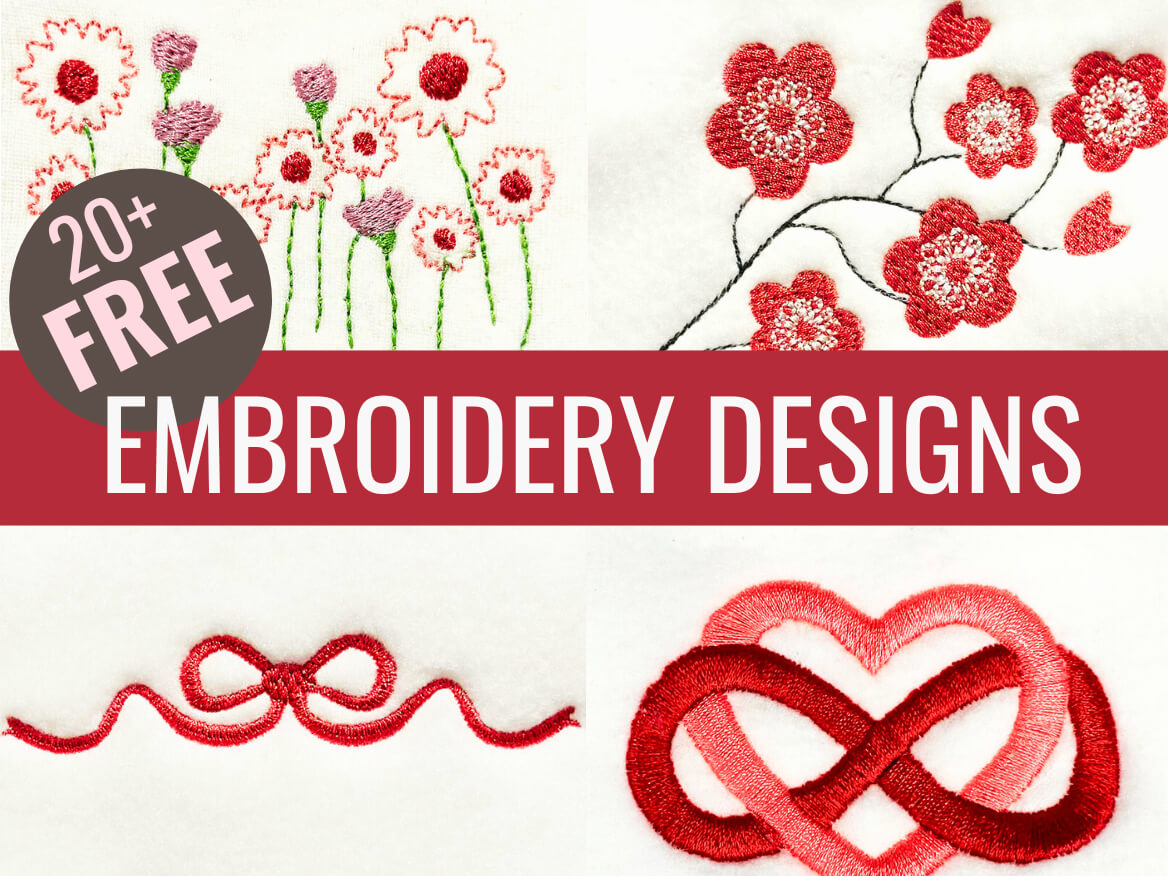
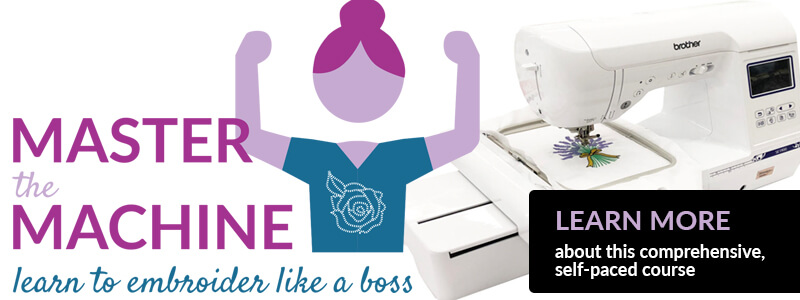
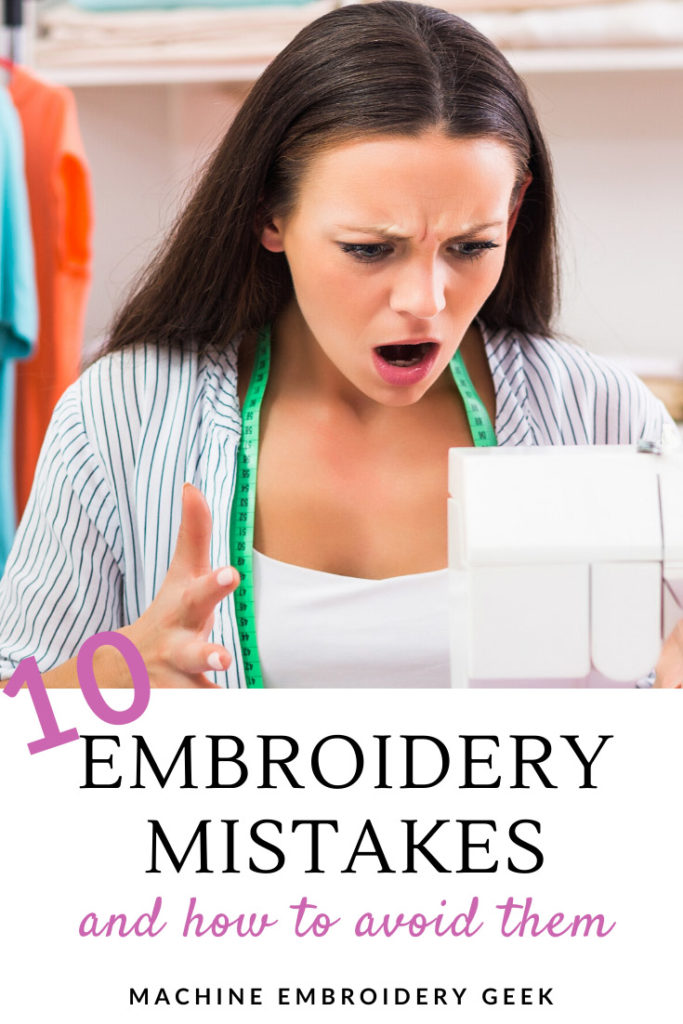
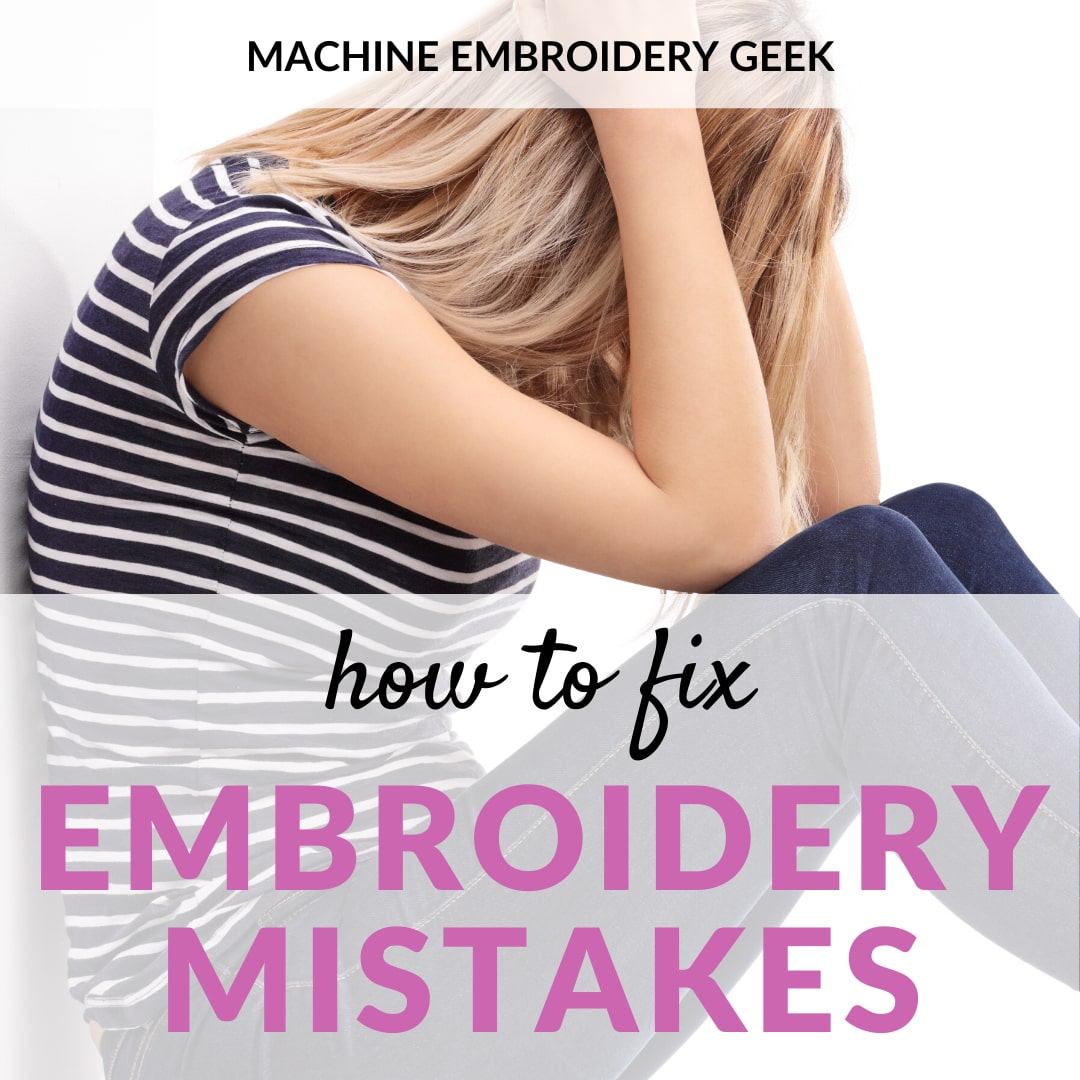

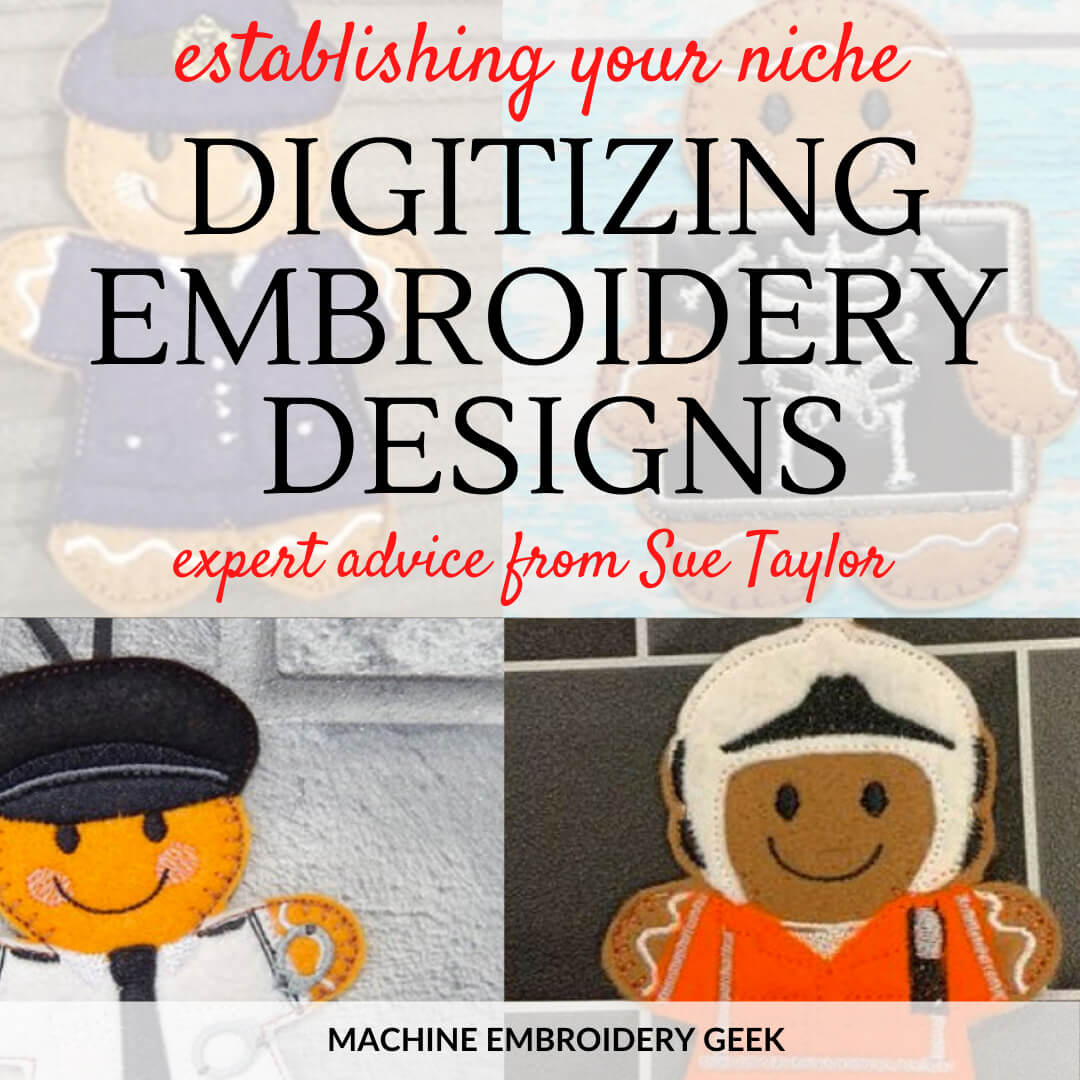
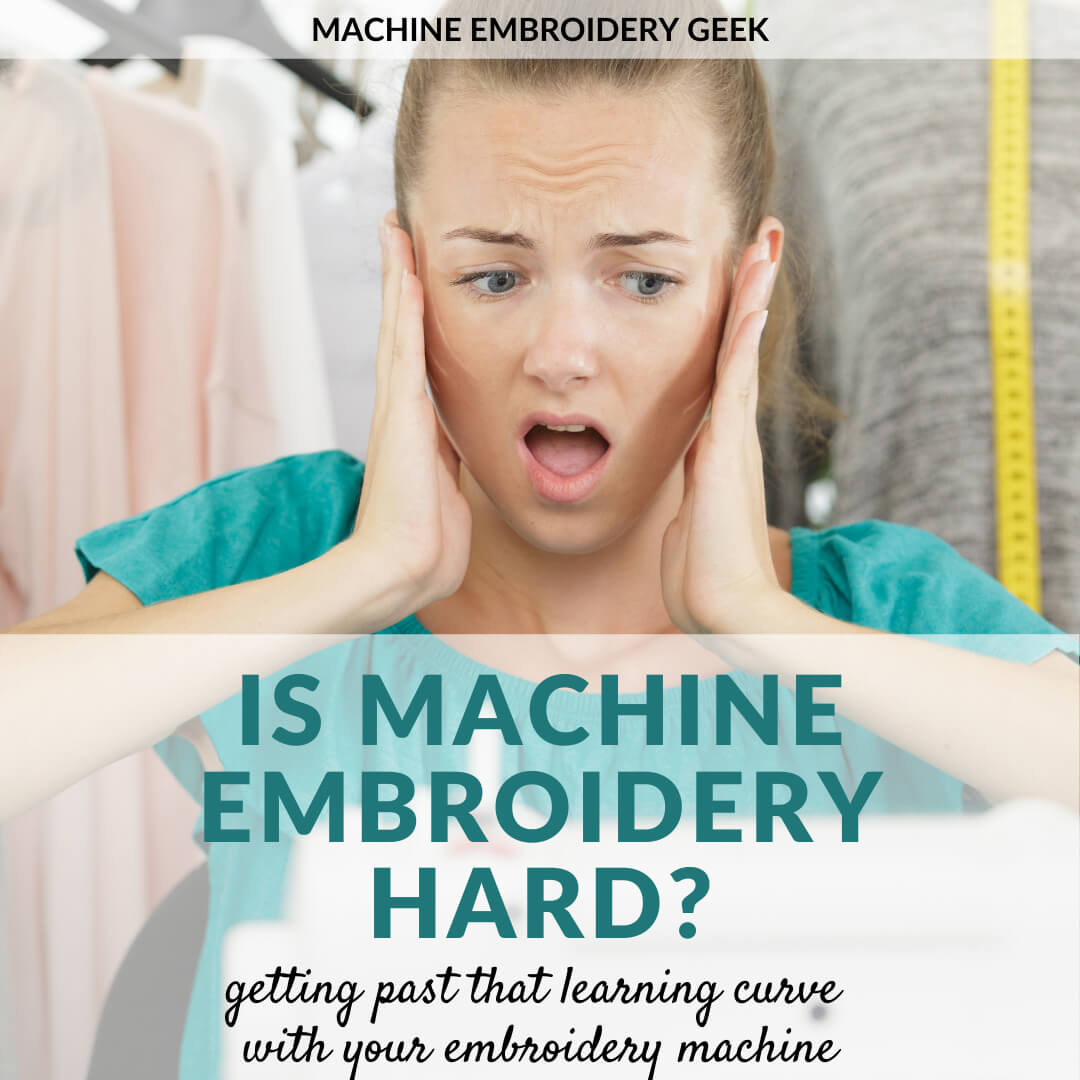
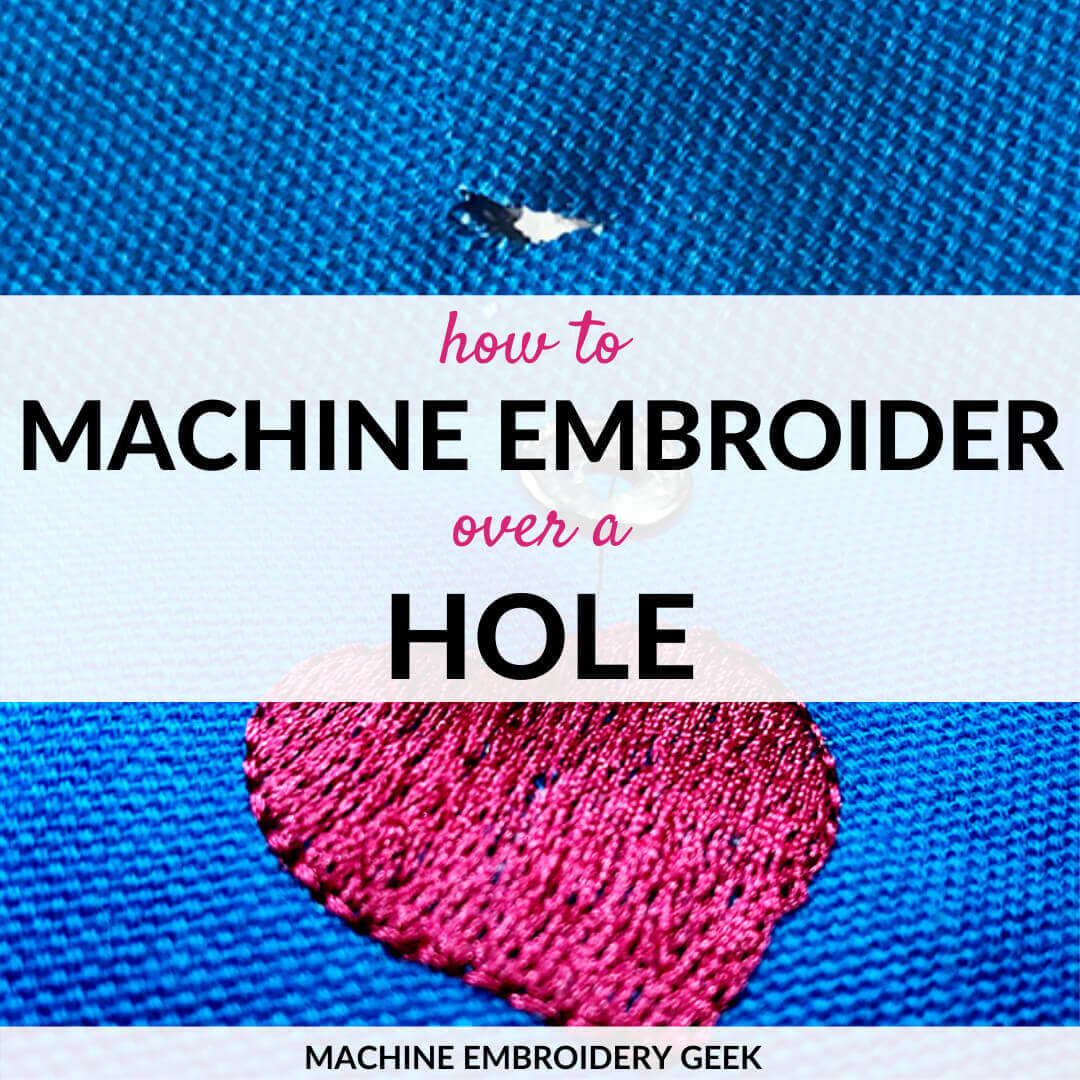


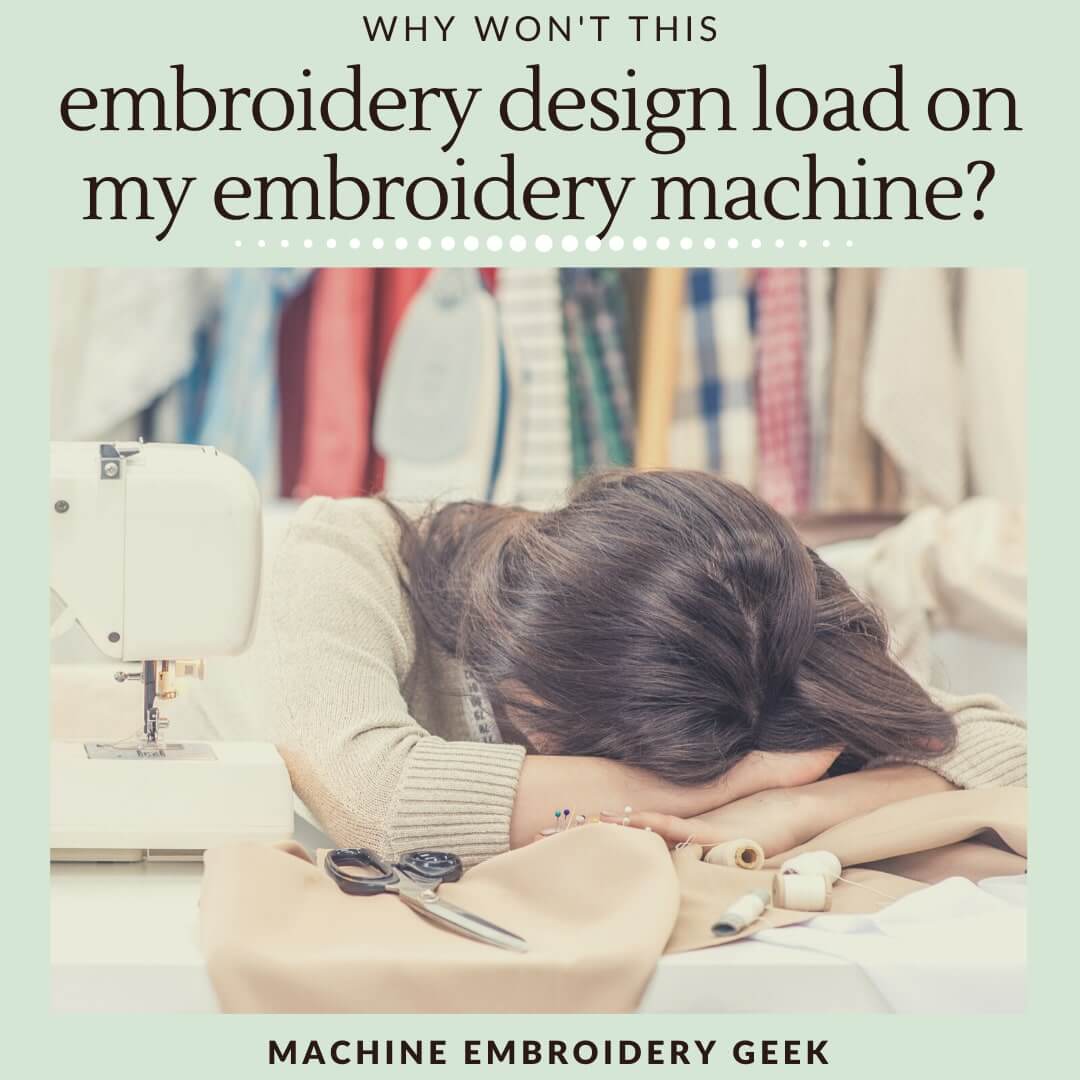
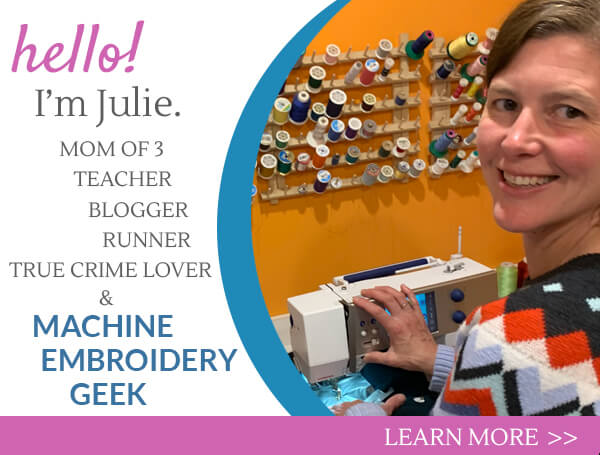
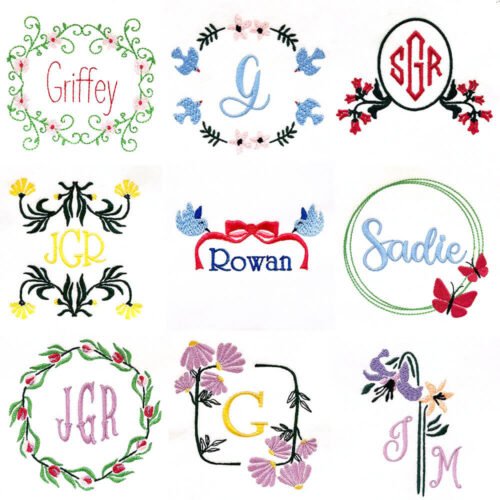

Good advice! I especially need the checklist before stitching. So much to remember!
Thank you! I think I am going to put that together as a PDF that I can download and print out to keep by my embroidery machine.
Yep I’m only in by 2 projects…. thank you so much for your help and time doing this.
You are welcome. I’m glad you found this to be useful.
oh you are so right i ;think my hardest is when there seems to be to many stitches and it wads up on the under side what am i doing wrong or better what should i do to prevent this
Thank you so much. I have used the hoop for all 13 towels abs it was so hard. I really wanted to give up. Now I know better, thanks to you
I loved reading your article on avoiding the 10 embroidery mistakes, however, it didn’t address my problem, so I’m sure you can help.
When I was embroidering on my husband’s polo shirt, the logo stitched out perfectly, but when I embroidered his name the material bunched up into a little ball and ruined the shirt and left a small hole. I think the font was too dense perhaps. Can you change from a satin stitch to a triple straight line stitch or do I need to get another font for this?
Hi Linda – I think your best bet is to purchase a font that works well for this purpose. I would also test stitch out the name on similar fabric.